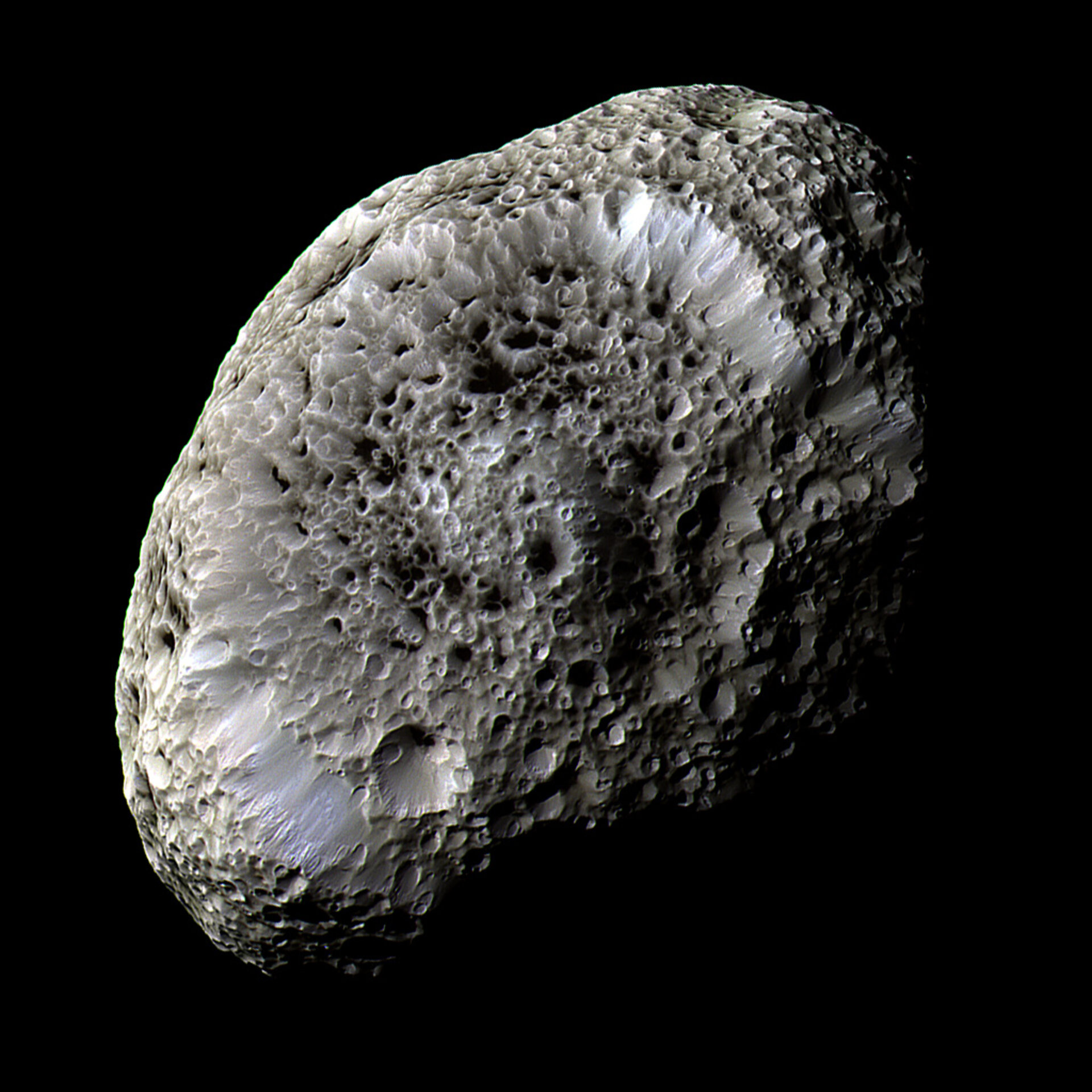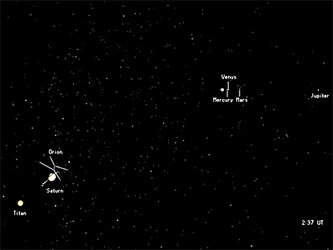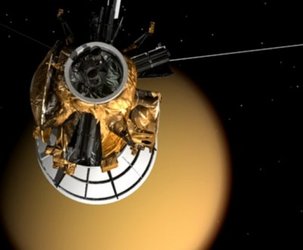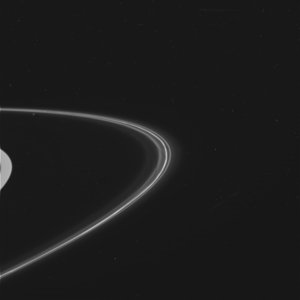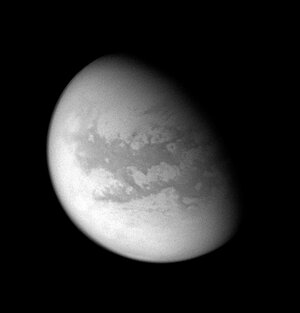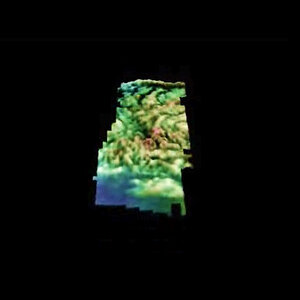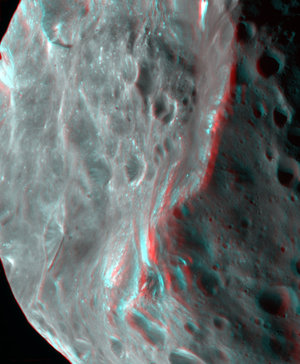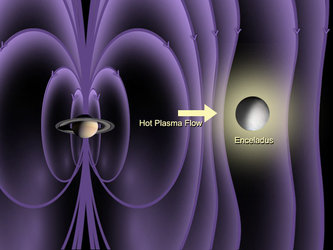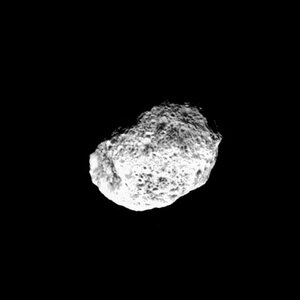Hyperion is an odd world
The NASA/ESA/ASI Cassini spacecraft performed fly-bys of Saturn’s moons Tethys and Hyperion between 24-26 September 2005, coming closer than ever before to each of them.
Images of Hyperion taken on 26 September show a surface dotted with craters and modified by some process, not yet understood, to create a strange sponge-like appearance, unlike the surface of any other Saturn moon.
This false-colour image of Hyperion reveals crisp details and variations in colour across the strange surface that might represent differences in the composition of materials. Hyperion has a notably reddish tint when viewed in natural light.
Dr Christophe Sotin, Universite de Nantes, France, is a member of the Cassini Visual and Infrared Mapping Spectrometer (VIMS) team and said: "The Cassini camera has provided stunning high-resolution images of Hyperion which is a very light satellite. Its density is about half that of ice and it is thought that its interior is porous. The surface is covered by impact craters, a lot of them showing dark material on their floors."
Scientists are extremely curious to learn what this dark material is that fills many craters on this moon. Features within the dark terrain, including a 200-metre wide impact crater surrounded by rays and numerous bright-rimmed craters, indicate that the dark material may be only tens of metres thick with brighter material beneath.
"The VIMS instrument took hyperspectral images that prove that both bright and dark material are composed of ice. Another finding of the VIMS analysis is that carbon dioxide would be present within the ice on both types of terrains. The dark material has an albedo 2.5 times lower than the bright material in the infrared," said Christophe Sotin.
"We are investigating what makes the floor of the craters darker. It was thought that some organic material could have come from Titan and be deposited within the crater. The VIMS spectra do not support this hypothesis although we cannot rule out that a thin icy frost deposited on top of this still-to-be-defined dark material. We are also investigating the idea that this dark material could be similar to the dark material found on two other moons Phoebe and Iapetus."
Scientists will also be examining Cassini's sharp views in hopes of determining whether there have been multiple episodes of landslides on Hyperion. Such ‘downslope’ movement is evident in the filling of craters with debris and the near elimination of many craters along the steeper slopes.
Answers to these questions may help solve the mystery of why this object has evolved with surface forms different to other moons of Saturn.
Cassini flew by Hyperion at a distance of only 500 kilometres. Hyperion is 266 kilometres across, has an irregular shape, and spins with a chaotic rotation. Much of its interior is empty space, which is why scientists call Hyperion a ‘rubble-pile’ moon.
For more information:
Christophe Sotin, Universite de Nantes, France
E-mail: Christophe.Sotin @ univ-nantes.fr
Jean-Pierre Lebreton, ESA Huygens Mission Manager
E-mail: jplebret @ rssd.esa.int
Carolina Martinez, NASA Jet Propulsion Laboratory, Pasadena, California, USA
Tel: 001 818 354 9382


